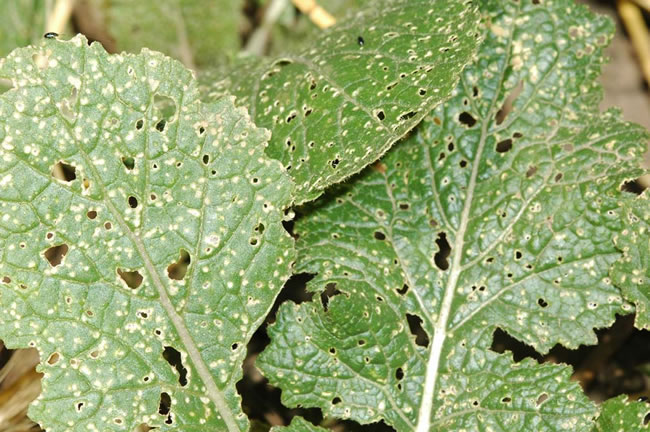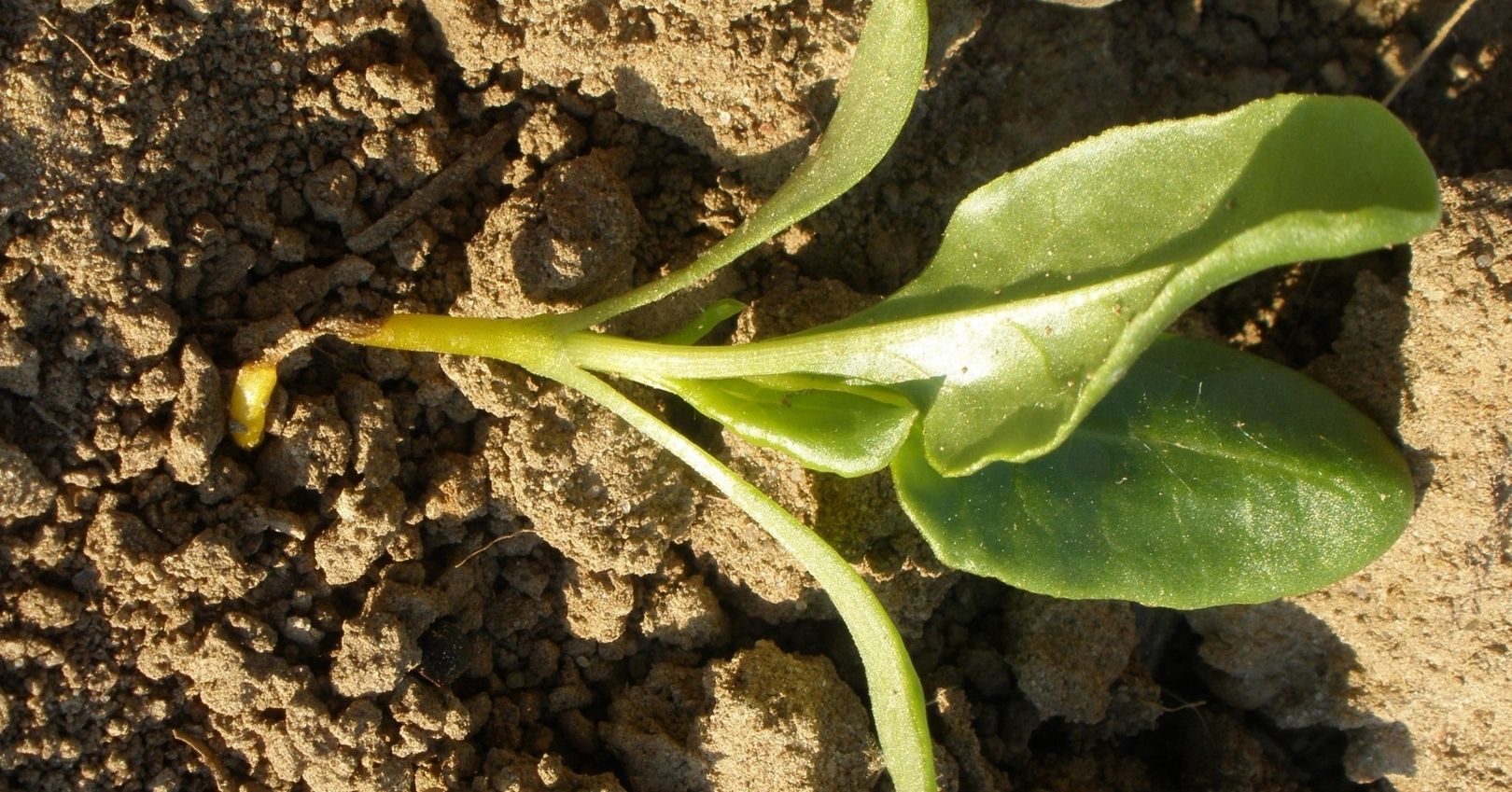I hope you all are having a good start to the season! As plants are emerging out in the field, and transplants growing in greenhouses are being set out, nefarious forces are emerging too. It’s time to start scouting and making a plan for the inevitable diseases and pests, with all their inbuilt hunger for your precious produce. Here’s a quick list of some common things to watch out for this time of year.
Leek moth was first trapped two weeks ago in the Annapolis Valley. Their first flights should be occurring throughout the province now. They are nocturnal so you may never notice them until the larvae are creating window-pane like damage to your onions, leeks, and garlic. They are difficult to control once they establish themselves, as they live inside of the leaves of onions or will bore their way into the stems of garlic and leeks, making the plants unmarketable. Their presence is relatively new in Nova Scotia but they have quickly established themselves. They generally have two flights here, one early in the spring and another later in the summer before garlic harvest. 
Leek moth larval feeding damage on garlic. (Photo: Agriculture and Agri-Food Canada.)
Onion, cabbage, and seed corn maggot. These each overwinter in the soil then emerge in the spring, with cabbage maggot flies appearing first, followed by onion maggot flies, then seed corn maggot flies. We can expect the cabbage maggot flies to start their first flights in a couple of weeks (middle to late May). Emergence happens roughly at the same time as yellow rocket starts to bloom. Generally you’ll first notice the presence of these maggots when transplants start wilting on hot days. This is due to the larvae feeding on roots; plants will eventually die if left unchecked. On a small scale, physical barriers (such as row cover, insect netting, etc) are effective. On a larger scale chemical controls are available to help manage these pests.

Onion maggot damage (Ontario CropIPM)
For those growing in tunnels or seed-starting greenhouses you will start to see thrips, springtails, aphids, and flea beetles emerging soon, or already emerged depending on the specifics of your tunnel setup. Inspect your transplants for feeding damage such as shotgun-like holes on your brassicas in the case of flea beetles, or tiny white spots on leaves in the case of thrips.

Onion thrip damage (Cornell University)

Flea beetle damage (UMN Extension)
While we’ve had relatively good weather for seeding and putting out transplants, the recent cold, dreary, and wet weather has slowed soil microbial metabolism, meaning that overwintering plants like garlic might be showing yellow leaf tips right now. This is most likely due to a slowdown in nitrogen mineralization as soil temperatures reduced. This can be remedied by applying a plant available nitrogen source such as a liquid fertilizer or urea. In addition to reduced mineralization rates, the cold wet weather was an excellent environment for promoting fungi such as Pythium, Rhizoctonia, and Smut.

Damping-off (Pythium spp.) beetroot seedling, (Penn State University Extension)
This is not an exhaustive list by any means, but hopefully gives you a good push to get out and start scouting your crops!
Please reach out to me to discuss any of these pests, or if your crops are suffering for other reasons.
Happy seeding and transplanting!
Tim (tmorcom@perennia.ca)












.jpg)
.jpg)
